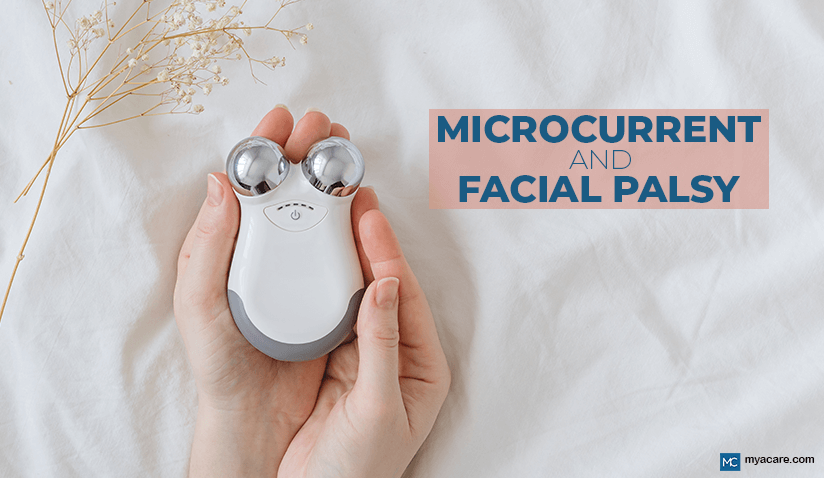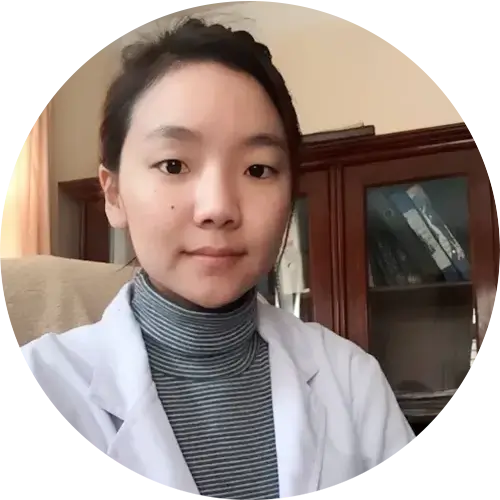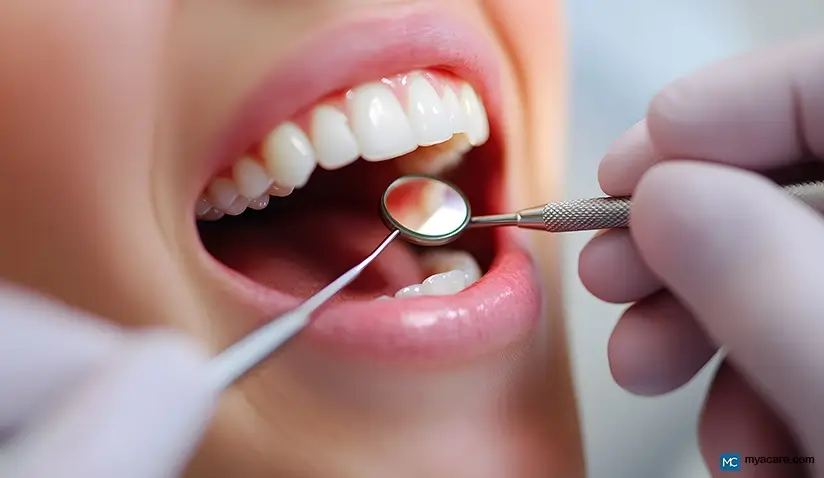Microcurrent Devices and Facial Palsy: What You Need to Know

Medically Reviewed by Dr. Sony Sherpa, (MBBS)
What Are Microcurrent Beauty Devices?
Microcurrent Devices for Facial Palsy
Microcurrent beauty devices are increasingly utilized in contemporary skincare practices. Promising firmer skin, reduced wrinkles, and lifted facial contours, these gadgets are commonly used in both professional spas and at-home beauty regimens. By delivering gentle electrical stimulation to facial muscles, they aim to "re-educate" the muscles, boost collagen production, and improve circulation, all of which can benefit those seeking non-invasive anti-aging solutions.
As these devices gained popularity, questions about their safety also emerged, especially for individuals with underlying conditions like facial palsy. Understanding whether these devices are suitable or risky for those with facial palsy is crucial before adopting beauty tech.
Understanding Facial Palsy
Facial palsy is a neurological condition where the muscles on one or both sides of the face become weakened or paralyzed due to damage or dysfunction of the facial nerve (cranial nerve VII). This nerve controls the muscles responsible for facial expressions, as well as some functions related to taste, tear production, and ear sensation. When it becomes inflamed, compressed, or injured, the result is a noticeable loss of muscle tone and control, leading to drooping, asymmetry, and difficulty performing simple movements like blinking, smiling, or raising an eyebrow.
The most common form is Bell’s palsy, an idiopathic condition believed to result from certain viral infections, which cause sudden inflammation and swelling of the facial nerve. However, facial palsy can also stem from other serious causes, including strokes (which typically affect the lower half of the face on one side), Lyme disease, head trauma, surgical injuries, tumors pressing on the facial nerve, or conditions like Guillain-Barré syndrome.
Symptoms can range widely depending on the cause and severity. Mild cases may present with slight muscle weakness, while severe cases can involve total facial paralysis. Additional signs often include pain around the jaw or behind the ear, excessive drooling, difficulty closing the eye on the affected side, headaches, and even altered taste sensation. In some cases, people may notice increased sensitivity to sound (hyperacusis) due to nerve involvement near the ear.
Recovery from facial palsy is highly variable. While many people with Bell's palsy begin to improve within a few weeks and recover fully over three to six months, others may experience lingering effects.
Microcurrent Beauty Devices: What Are They?
Microcurrent beauty devices work by delivering low-level electrical currents, typically in the range of 10-500 microamperes, designed to mimic the body’s natural bioelectric currents. These devices stimulate facial muscles, claiming to improve circulation, boost ATP (adenosine triphosphate) production, enhance collagen and elastin production, and "lift" sagging skin.
Originally introduced in clinical settings for wound healing and pain relief, microcurrent therapy has evolved into a beauty treatment that is marketed as safe for all skin types. Popular in spas and increasingly available for at-home use, these devices are designed to improve skin tone, stimulate facial muscles, and combat visible signs of aging with consistent use.
It is important to distinguish microcurrent devices from other types of electrical stimulation used on the face, such as:
- TENS units (for pain relief)
- EMS devices (which deliver stronger muscle contractions)
- High-frequency devices (used for acne and skin rejuvenation)
Microcurrent stands out for its sub-sensory, gentle current designed for cosmetic purposes rather than intense muscle stimulation.
Microcurrent Devices for Facial Palsy: The Appeal and the Catch
Marketed as tools that tone, lift, and rejuvenate the face by delivering gentle electrical stimulation, these devices can be an attractive option for those eager to hasten their recovery. Many people dealing with the challenges of facial paralysis are drawn to microcurrent technology in the hope that it might help:
- Speed up muscle recovery by reactivating dormant or weakened facial muscles through gentle stimulation.
- Address visible asymmetry and drooping, helping to restore a more balanced and symmetrical appearance that often becomes disrupted in facial palsy.
- Regain confidence through improved facial appearance, as facial palsy can take a significant toll on self-esteem and social interactions.
- Access a convenient, non-invasive treatment that can be self-administered in the comfort and privacy of your home, avoiding the costs and logistics associated with frequent clinic visits.
The theoretical appeal of microcurrent devices stems from their design to stimulate facial muscles. This stimulation is believed to promote muscle tone, improve circulation, and potentially encourage collagen and elastin production.
Potential Benefits (Under Expert Guidance)
That said, not all use of microcurrent is discouraged. In highly controlled clinical settings, certain therapists may incorporate microcurrent as part of a broader facial rehabilitation program, but only in the later stages of recovery. For example:
- In cases of Bell's palsy, after significant spontaneous nerve recovery.
- Under the guidance of facial rehabilitation experts trained in neuromuscular retraining.
- Using precise parameters tailored for specific muscle re-education, avoiding overstimulation.
Importantly, such treatments involve FDA-approved devices designed for therapeutic use, not generic beauty gadgets. For example, microcurrent is FDA-approved for applications like:
- TENS therapy (for musculoskeletal pain)
- Wound healing support
- Post-surgical rehabilitation
The key difference is that these professional treatments are grounded in scientific evidence, with careful monitoring of safety and efficacy, unlike unregulated home-use devices. Users should ensure that any device considered for therapeutic purposes has appropriate regulatory approval and is used under professional supervision.
Potential Risks of Microcurrent for Facial Palsy
Despite being promoted as a gentle and non-invasive treatment, the use of microcurrent devices in people with facial palsy carries notable risks that cannot be overlooked. While these devices are generally considered safe for healthy users seeking cosmetic benefits, their application in the context of nerve injury and muscle paralysis presents a very different set of challenges.
Here’s why caution is critical:
Risk of Synkinesis
Among the most serious concerns is the potential to trigger or worsen synkinesis. This condition arises when regrowing nerve fibers, in their attempt to reconnect with muscles, do so incorrectly, resulting in involuntary facial movements. For example, a person might experience their eye involuntarily closing when they smile or twitching in the cheek while trying to speak. Random or excessive electrical stimulation from microcurrent devices can exacerbate this faulty rewiring, leading to persistent and difficult-to-treat coordination problems. Once established, synkinesis is challenging to reverse, often requiring long-term specialized therapy.
Muscle Imbalance
Facial symmetry relies on a fine-tuned balance between multiple small muscle groups. In facial palsy, some muscles may partially recover while others remain weak. Using a microcurrent device without expert supervision can unintentionally overstimulate certain muscles while neglecting others, further deepening asymmetry. Rather than improving appearance, this can actually worsen visible drooping on one side or cause uneven pulling during facial expressions.
Overstimulation and Fatigue
Muscles weakened by nerve damage are especially vulnerable to fatigue. While the idea of “activating” them with microcurrent might sound beneficial, overstimulation can quickly tire these fragile muscles, leading to soreness, twitching, and delayed recovery. In severe cases, overworked muscles may even regress in strength, setting back progress that has been made through careful rehabilitation exercises.
Interference with Natural Reinnervation
One of the most delicate phases of recovery from facial palsy is reinnervation - the process where damaged nerves gradually reconnect with their target muscles. This process requires time and precise biological cues. Applying external electrical stimulation during this critical phase can disrupt natural nerve-muscle reconnections, potentially leading to miswiring, incomplete recovery, or chronic facial movement disorders. Experts generally advise against any form of muscle stimulation during early nerve regeneration unless closely monitored by a specialist.
Sensory Issues
Individuals with facial nerve damage often experience altered or heightened skin sensitivity. Using a microcurrent device in these areas can provoke tingling, numbness, burning sensations, or discomfort. In some cases, the stimulation may aggravate nerve pain or cause unpleasant hypersensitivity, further complicating rehabilitation.
Delaying Effective Treatment
One potential concern is that the convenience and cosmetic appeal of at-home microcurrent devices may lead some individuals to rely on them instead of seeking medically recommended care. In cases like facial palsy, relying solely on these devices could unintentionally delay the initiation of evidence-based treatments, such as targeted facial exercises, neuromuscular retraining, or medical interventions - key elements in optimizing recovery.
Incorrect Usage
Unlike therapies administered by trained professionals, at-home microcurrent devices place the responsibility of correct usage on the individual. Without a clear understanding of facial anatomy, nerve pathways, and proper stimulation parameters, users may apply the device at the wrong frequency or intensity or directly over areas where stimulation is contraindicated. Such misuse can multiply the risks mentioned above, compounding nerve irritation, deepening asymmetry, and potentially prolonging the healing timeline.
Can Microcurrent Cause Facial Paralysis?
One of the most common concerns is whether microcurrent devices can actually cause facial paralysis. Based on current expert consensus, properly used microcurrent in healthy people is unlikely to cause nerve damage or paralysis. However, misuse or improper application, such as excessive duration or frequency, particularly on people with pre-existing nerve injury, could exacerbate existing conditions, lead to muscle dysfunction, and potentially contribute to prolonged paralysis symptoms.
Can Microcurrent Cause Nerve Damage?
While the low current itself is generally considered safe for healthy tissue, the danger lies in its improper application. Using microcurrent over areas with nerve injury or active disease processes can interfere with recovery, leading to poor outcomes. Experts advise against using microcurrent as a DIY fix for nerve-related conditions without medical oversight.
Who Should Avoid Microcurrent Facial Treatments?
Given these risks, the following groups should strictly avoid microcurrent facial treatments unless specifically advised by a qualified facial rehabilitation specialist:
- Individuals in the acute stage of facial palsy
- Those experiencing synkinesis
- People with pacemakers or implanted electronic devices
- Users applying devices over broken skin, acne, or active inflammation
- Pregnant women (as a general precaution)
- Individuals with epilepsy (as a general precaution)
These contraindications are critical for safety and to prevent the harmful effects of microcurrent on vulnerable facial tissues.
The Importance of Evidence-Based Facial Palsy Rehabilitation
For anyone coping with facial palsy, sticking to evidence-based treatments is critical for the best chance of recovery. Current best practices include:
- Medical management: Using corticosteroids and antivirals in the early phase (especially in Bell’s palsy).
- Targeted facial exercises: Prescribed by trained physical or occupational therapists to encourage proper muscle coordination.
- Neuromuscular retraining techniques: These help prevent synkinesis and muscle imbalance by retraining muscle control in a structured way.
- Heat therapy: To relax muscles and improve blood flow.
- Facial physiotherapy and myofunctional therapy: Specialized programs to restore symmetry and movement.
In contrast, there is no robust scientific evidence supporting the widespread use of at-home microcurrent devices for treating facial palsy. While microcurrent therapy shows promise in some areas, its role in facial nerve rehabilitation remains limited and highly specialized.
Conclusion
Microcurrent beauty devices are widely used in the skincare field and may offer benefits such as subtle lifting, enhanced circulation, and increased collagen and elastin production in healthy individuals. However, their use in the context of medical conditions, such as facial palsy, requires more caution, as the effects and safety profile in these cases are less well established.
Those considering microcurrent therapy for facial palsy should consult a medical professional before proceeding. Professional treatments and carefully supervised rehabilitation can offer more reliable and safer paths to recovery than unregulated at-home devices.
To search for the best doctors and healthcare providers worldwide, please use the Mya Care search engine.
The Mya Care Editorial Team comprises medical doctors and qualified professionals with a background in healthcare, dedicated to delivering trustworthy, evidence-based health content.
Our team draws on authoritative sources, including systematic reviews published in top-tier medical journals, the latest academic and professional books by renowned experts, and official guidelines from authoritative global health organizations. This rigorous process ensures every article reflects current medical standards and is regularly updated to include the latest healthcare insights.

Dr. Sony Sherpa completed her MBBS at Guangzhou Medical University, China. She is a resident doctor, researcher, and medical writer who believes in the importance of accessible, quality healthcare for everyone. Her work in the healthcare field is focused on improving the well-being of individuals and communities, ensuring they receive the necessary care and support for a healthy and fulfilling life.
References:
Featured Blogs



